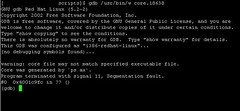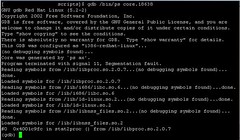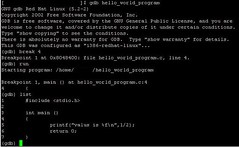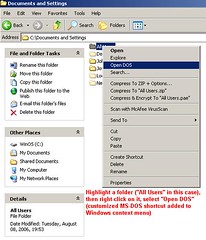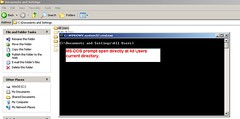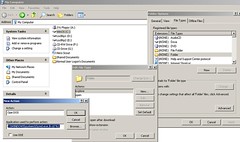Starting Redhat 7.3, Redhat Linux support two type of printing system known. These two subsystem are known as LPRng and CUPS respectively.
- LPRng printing system, Redhat default printer subsystem, provides printconf as printer manager utility to configure /etc/printcap configuration file, printer spooler, etc.
While at command prompt, executing printconf-tui (Redhat 7.3) or redhat-config-printer-tui (Redhat 8.0) to bring up command line version of LPRng printing manager.
For the graphical version, click on the Main Menu => System Settings => Printing or type redhat-config-printer or printconf-gui at a XTerm or Gnome terminal shell prompt to bring up the same GUI program.
- CUPS, shorts for Common UNIX Printing System, is an Internet Printing Protocol-compliant system for UNIX and Linux. CUPS printer subsystem uses the printer manager utility called lpadmin to configure /etc/printcap configuration file, printer spooler, etc. If CUPS is not the default printer subsystem, launch the Printer System Switcher application by executing the command redhat-switch-printer and set CUPS as the new default printer subsystem.
To allow only a few selected users to use a printer called inkjet-graphic, execute the command lpadmin -p inkjet-graphic -u allow:keith,jazz,alice and these setting will be updated to /etc/cups/printers.conf configuration file.
Note! The printer manager utility, printconf or lpadmin, saves any printer configurations made to the /etc/printcap setting file. If there is a need to make any printer configurations outside the printer manager utility, add them to the /etc/printcap.local file. The /etc/printcap file will be deleted whenever the printer manager executing or a server reboot.
Steps to add new printer is almost the same among printer manager utilities. In brief, these are the key points to get it works:- Give a descriptive queue name to distinguish the new printer with other printers or network resources, such as keith_laser, boss_laser, tenfloor_inkjet, etc.
- Choose the appropriate printer queue type, such as LOCAL queue type for local physical attached printer, JETDIRECT for jetdirect printer, etc.
- If there is option to select the Printer Device, rescan the devices for the correct device, or create a custom device. This will be the /dev entry that represents the interface between the device driver and the printer itself. In most instances, the device will be named /dev/lp0.
- Choose a Printer Driver by selecting one from the extensive list. Drivers marked with an asterisk (*) are recommended drivers. If to configure remote printer or printer that does not have a corresponding driver in the list, the safest choice would be Postscript Printer. For JetDirect printers, Raw Print Queue is recommended.
To enable local printer sharing for remote host:- In local host which the printer attached, edit the /etc/lpd.perms configuration file to add in one line that will read ACCEPT SERVICE=X REMOTEHOST=</etc/host.lpd and make sure it should added before the line containing REJECT SERVICE=X NOT SERVER.
- In the local host as well, edit the /etc/host.lpd printer access control file add in the full qualify DNS host name or IP address, one record per line, of hosts that are allowed to share the printer attached.
- At the remote host, add the network printer as adding local printer except one has to choose a Unix Printer queue type and type the print server hostname and port (usually 631).
Related information:- LinuxPrinting.org is a database of documents about printing, along with a database of nearly 1000 printers compatible with Linux printing facilities.
- Linux printing how-to from the Linux Documentation Project.
- Search more related info with Google Search engine built-in



